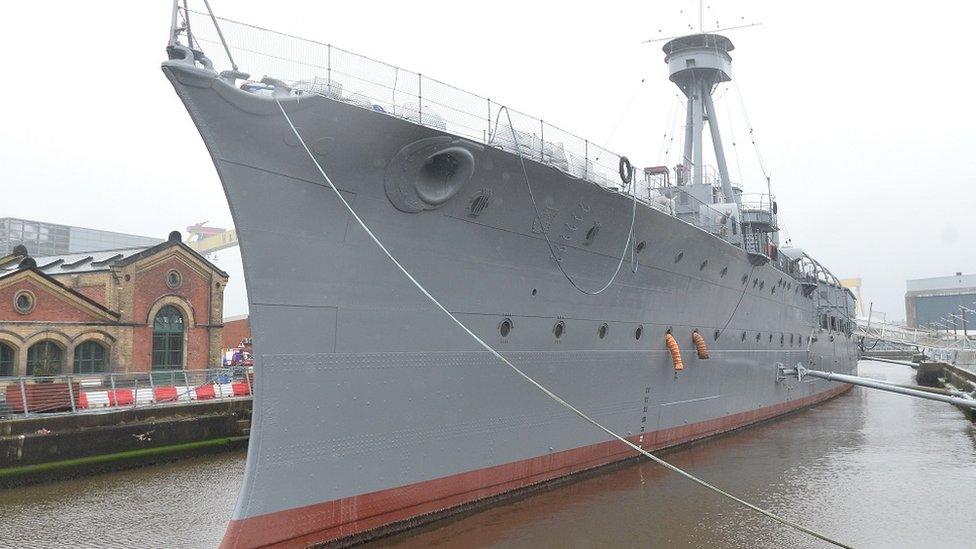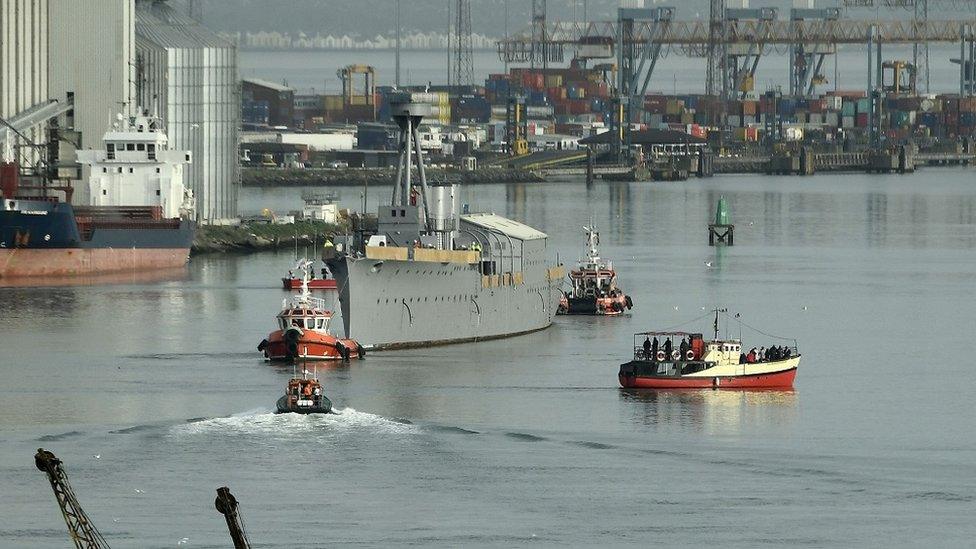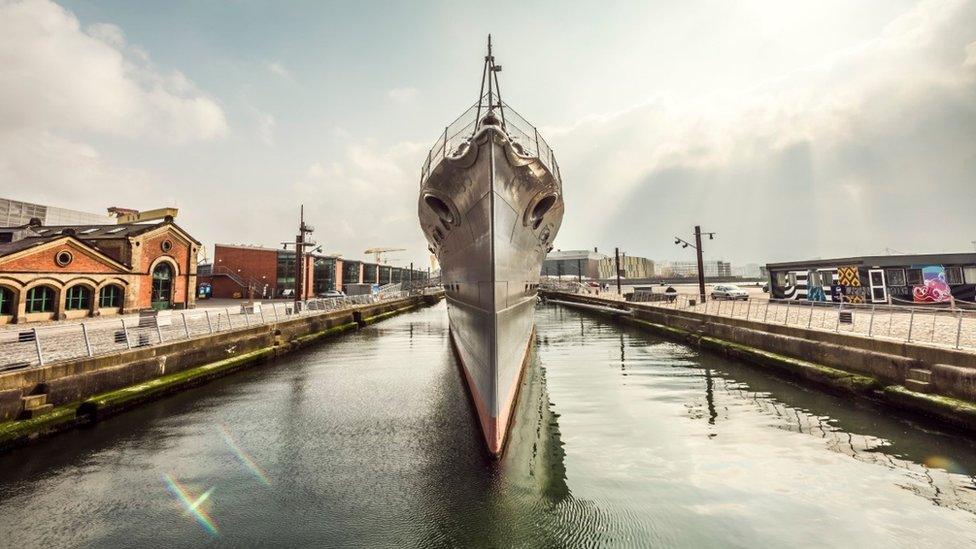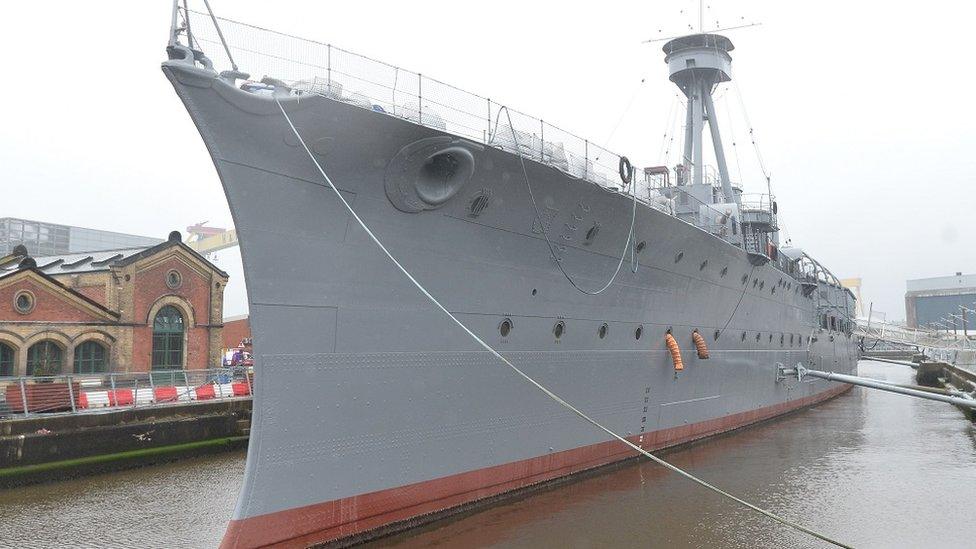Covid-19: Two month reprieve for HMS Caroline museum
- Published

The HMS Caroline museum has won a reprieve following months of uncertainty over its future.
The vessel is the sole surviving ship from the 1916 Battle of Jutland, the biggest sea battle of World War One.
However, the tourist attraction faced a major loss of income during lockdown.
The National Museum of the Royal Navy (NMRN) closed HMS Caroline and other visitor facilities in England at the outbreak of the coronavirus pandemic.
The loss of ticketing revenue during that period left it with a £6.35m budget shortfall.
While the Treasury has offered an emergency grant to reopen NMRN sites in England, its Northern Ireland funding arrangement is devolved to the executive.
On Friday, the NMRN confirmed that it has now come to a joint understanding with Stormont's Department for the Economy (DfE)
'Stress and uncertainty'
The terms will allow the museum - which was shortlisted for the 2019 Art Fund Museum of the Year award - to continue to operate until 31 December, and jobs which were at risk of redundancy following the end of the furlough scheme are no longer considered to be at risk.
In a statement, the museum said it regrets the "stress and uncertainty" which staff faced.
"However, negotiation was required around a number of clauses in the agreement to ensure that the staff, ship and museum were protected from financial uncertainty," a spokesman said.
"Whilst the long-term operation of the ship is still yet to be confirmed, this interim agreement means that staff will remain employed until 31 December, when a decision about the future operation of the ship is hoped to be in place.
"The museum is relieved that it has been able to protect its incredible team at HMS Caroline from redundancy for the next eight weeks and wants to assure them that it continues to work exhaustively with DfE for a longer term solution that means that visitors will be able to once again climb on board this breathtaking 100-year-old survivor, the only surviving ship from the Battle of Jutland."

What is HMS Caroline?
Built in 1914 in Birkenhead in England, HMS Caroline was one of the fastest warships of its time.
The Battle of Jutland - off the coast of Denmark - involved some 250 ships from the Royal Navy's Grand Fleet and the German High Seas Fleet.

More than 8,500 sailors lost their lives in the 12-hour battle on 31 May and 1 June 1916.
After the war, HMS Caroline was berthed in Belfast as a training ship, but also saw service in World War Two.
There were fears at one point that the ship would be moved from Belfast after it was decommissioned as a Royal Navy training vessel in 2011.
However, about £15m of funding enabled it to stay in the city and open as a floating museum.
The living quarters of the captain, officers and ratings as well as the signal school, engine room, sick bay and galley were all intact but were restored and opened to the public.
A further restoration of the Alexandra Dock - where it is moored - and the nearby Pump House in Titanic Quarter was completed in 2018.

- Published26 April 2019

- Published23 July 2020
